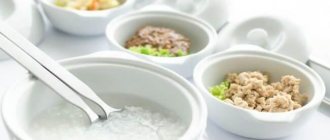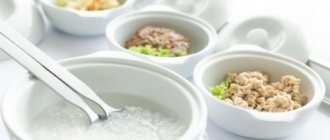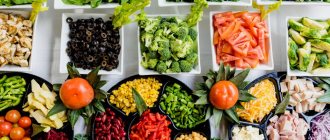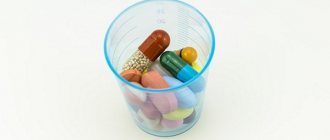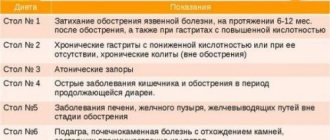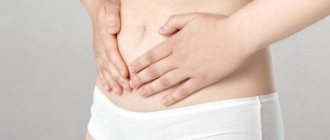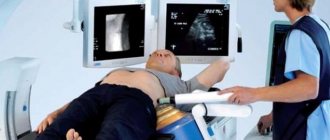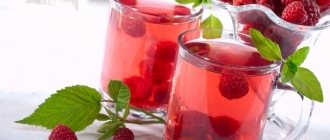This information will help you eat healthily after a gastrectomy (surgery to remove all or part of your stomach).
After a gastrectomy, you will eat and digest (absorb) food differently. Your stomach will become smaller or be removed completely. This means that you will become fuller faster than before surgery.
The surgery may also remove or replace the valve that controls food from the stomach to the intestines. This means you will digest food too quickly, not absorbing nutrients as efficiently as you did before surgery.
If you have questions about your diet while in the hospital, ask to see a dietitian. After you leave the hospital, you can call 212-639-7312 with questions or to schedule an outpatient appointment with a clinical dietitian nutritionist.
to come back to the beginning
General recommendations for diet after gastrectomy surgery
After surgery, your stomach will not be able to hold as much as it did before. You will have to eat small meals 6 times a day or more often, instead of eating 3 main meals. This will allow you to eat the amount of food you need even though the size of your stomach has decreased or the stomach has been completely removed.
Tell your doctor and clinical dietitian about weight loss if it happens against your wishes.
Recommendations for food consumption
- Start eating 6 or more small meals a day. When you start eating after surgery, you should be able to comfortably eat only ½ to 1 cup (serving) of food at a time. Over time, you will be able to increase your portions and eat less frequently. This may take several months. In some cases, it will be necessary to continue to eat 6 small meals a day. All people are different.
- Chew your food thoroughly. This will make it easier for your body to digest it.
- Eat slowly. This way you can stop eating before you feel the discomfort of overeating.
- Sit up straight while eating.
- Eat your last meal at least 2 hours before bedtime.
- Do not drink more than 4 ounces (½ cup or 120 ml) of liquid with meals. This will help you eat enough solid food without overeating. This will also prevent food from entering the small intestine too quickly. Remember that soup and protein shakes are considered liquids.
- If you experience dry mouth or cough, you can take a few small sips of water.
Beverage recommendations
- Aim to drink about 8 to 10 glasses (8 ounces or 240 ml) of fluid per day. Avoid carbonated drinks if they make your stomach feel full.
- Drink most liquids at least 1 hour before meals or 1 hour after meals. This will relieve you of the feeling of fullness in your stomach and prevent dehydration.
- Do not drink more than 4 ounces (½ cup or 120 ml) of liquid with meals.
Vitamin B12
If you had most of your stomach removed during surgery, you will need to take vitamin B12. Vitamin B12 can be taken as a food supplement (in tablet form) or as a monthly injection.
You may also need vitamin and mineral supplements. If this is the case, your doctor or clinical dietitian dietitian will discuss this issue with you.
to come back to the beginning
Content
- 1 Diet for post-gastroresection syndrome 1.1 Medical nutrition for patients who have undergone partial gastrectomy
- 1.2 Medical nutrition in the first days after gastrectomy 1.2.1 Diet option with mechanical sparing for patients who have undergone gastrectomy
- 1.2.2 Diet option without mechanical sparing for patients who have undergone gastrectomy
- 2.1 Medical nutrition for patients who have undergone total gastrectomy 2.1.1 Diet option for patients after total gastrectomy and complications from the digestive organs after 1.5-3 months
Food intolerance after surgery
Food intolerance is discomfort or unpleasant symptoms that occur after consuming a certain food or drink. After surgery, you may develop intolerances to foods that did not cause problems before surgery.
Sugar intolerance
Some people experience cramps, stomach pain, or diarrhea (soft or loose stools) within 20 minutes of eating high-sugar foods or drinks. This is called operated stomach syndrome. This syndrome can also occur if you eat a lot of food at one time.
Some people experience weakness, hunger, nausea (feeling like you're going to throw up), anxiety, shaking, or sweating 1 to 2 hours after eating sugar-containing foods. This happens because your body releases too much insulin after eating a lot of sugar. When there is a lot of insulin in the blood, blood sugar levels decrease.
Stomach surgery and low blood sugar can be controlled by making dietary changes and watching what you eat. Try to avoid foods and drinks that contain a lot of sugar, such as:
- carbonated drinks with sugar;
- Fruit juices
- candies;
- Cane sugar
- Honey
- syrups;
- cakes and cookies.
Cakes, cookies, and candies sweetened with sugar alcohols (such as sorbitol and mannitol) can be eaten in moderation. If you eat too much, you may experience diarrhea or diarrhea.
To avoid these symptoms, eat small meals, include protein in your diet, and try to eat foods that contain soluble fiber (such as canned fruit, bananas, peanut butter and oatmeal).
Fat intolerance
Some people have trouble digesting large amounts of fat. Start with small amounts and then gradually increase the amount of fat in your diet. High fat foods include:
- butter, margarine and vegetable oils;
- mayonnaise;
- creamy salad dressing;
- cream cheese;
- gravies;
- potato and corn chips;
- fatty desserts;
- fried food;
- Fat meat
If your stool is pale, oily, or light, or smells more unpleasant than usual, you may have trouble digesting fats. If you have any of these symptoms, consult your doctor or outpatient clinical dietitian dietitian. You may need to take medicine to help digest fat. This happens extremely rarely.
Lactose (dairy) intolerance
Lactose is a type of sugar found in dairy products. Some people have trouble digesting lactose after gastrectomy surgery. This is called lactose intolerance. Symptoms of lactose intolerance include gas, bloating and diarrhea. They can appear between 30 minutes and 2 hours after consuming dairy products.
After surgery, gradually introduce dairy products into your diet. Milk, ice cream and soft cheeses contain large amounts of lactose. There is less of it in hard cheeses, yogurt and butter.
To see if you can tolerate dairy, start with one 4-ounce (½ cup or 120 ml) serving of milk.
- If symptoms of lactose intolerance do not appear, you can increase the amount of dairy products you consume.
- If you have any symptoms of lactose intolerance, you may be able to eat foods that contain less lactose. Pay attention to how you feel after consuming various dairy products. Closely monitor how you feel after consuming dairy products with non-dairy foods.
If you suspect you may be lactose intolerant:
- Try taking a drug that helps digest dairy products (such as Lactaid® tablets or drops);
- Try eating processed dairy products that have the lactose removed (such as milk, cottage cheese, and Lactaid ice cream);
- Seek help from a clinical dietitian if necessary.
In some cases, lactose intolerance that develops after surgery goes away over time. After a couple of months, you can try consuming dairy products again to see if you still have symptoms.
to come back to the beginning
Diso Nutrimoon
Protein for treatment and rehabilitation
An easily digestible, tasteless protein mixture, a source of proteins and amino acids necessary for the body to fight illness, recover from injuries, illnesses and operations.
More details
The carbohydrate content is reduced to 300-320 grams due to easily digestible (simple) carbohydrates, the consumption of which can result in dumping syndrome, manifested by weakness, palpitations, chills, a feeling of heat, pain and bloating, and diarrhea. In this case, foods containing sugar are completely excluded from the diet.
Monitoring the most common problems
The following describes common problems that occur after gastrectomy surgery. Keeping a log of the foods you eat and writing down any symptoms or problems you experience will help you understand why these problems occur. You can use the form for recording the consumed foods and drinks, which is given at the end of this material.
If the tips below don't help you, talk to a clinical dietitian dietitian or your doctor.
Tips for controlling nausea
- Avoid eating heavy, spicy and fatty foods.
- Don't eat or drink too quickly. Try putting your fork down before taking another bite from your plate.
- Don't eat or drink too much at one meal.
- Do not lie horizontally after eating. Wait 2-3 hours before going to bed.
Tips for controlling overeating
- Don't eat or drink too much at one time.
- Don't drink too much liquid during meals.
- Don't eat or drink too quickly. Try putting your fork down before taking another bite from your plate. The signal that you are full reaches your brain only after 20 minutes.
- If you are having trouble switching to 6 small meals instead of 3 main meals, create a meal plan with fixed eating and drinking times.
- If you notice that your portions are back to being as large as they were before surgery, try preparing your meals in mini portions or pre-dividing them into ready-to-use portions.
- Avoid drinking carbonated drinks (such as soda and mineral water).
- Avoid vegetables that can cause gas (such as broccoli, cauliflower, cabbage, Brussels sprouts, onions, and legumes).
Tips to Prevent Diarrhea
- First of all, try to eat less sugar. Also try eating less dairy products. Lastly, don't eat a lot of fatty foods. Notice if the diarrhea goes away when you limit your intake of one of these ingredients. If so, consume such foods in smaller quantities.
- Avoid sugar alcohols such as sorbitol and mannitol. They are often found in chewing gum, candy, cough suppressants, dairy desserts, frostings, cakes and cookies. To find out if a product contains these ingredients, check its ingredients. You can use sweeteners such as NutraSweet® or Equal®.
- Try to eat foods that contain soluble fiber, such as canned fruit, bananas, peanut butter and oatmeal.
- Make sure you store food properly at home. Immediately put leftover food in the refrigerator or freezer.
- After 2 days, throw away any unused leftovers stored in the refrigerator.
- After 6 months, throw away frozen leftovers.
- Defrost leftover food in the refrigerator or microwave rather than just on the kitchen counter. Heat it to a safe temperature for consumption when the food begins to steam.
to come back to the beginning
Reviews and results
Properly organized nutrition after gastric resection is an essential component of the rehabilitation process, and the timing of recovery and the course of the postoperative period largely depend on its proper organization and compliance. Reviews from most patients emphasize the importance of proper nutrition after gastric surgery.
- “... They operated on me for gastric bleeding after a sharp autumn exacerbation of a peptic ulcer. Of course, they immediately put me on a diet. At first I was scared to eat, because I was afraid that the bleeding might resume. But after 15 days I was transferred to Table 1B, 1B, and then to the first table, where I stayed for almost 8 months. After recovery, I still try to stick to my diet and quit drinking alcohol and smoking. As the surgeon told me, diet is now your doctor and everything depends on your attitude to nutrition”;
- “... I regret that I didn’t take diet seriously before, although every year I suffered from severe exacerbations of peptic ulcers, and now, after undergoing surgery for a perforated ulcer, I try to eat right. True, when going to work, following a diet is not easy and not very convenient, but I had to learn how to cook and take everything I needed with me to work, since there is still no alternative, and now I’m afraid to eat like everyone else from a common table.”
Eating in restaurants and during social events
At many social events, food takes center stage. Remember that portions at various events and restaurants can be quite large. It usually takes time to get used to eating out at restaurants or attending events such as weddings and dinner parties.
- If you've managed the appetizer, you may find that you need to take the main course with you.
- If you miss an appetizer, try eating only half of your main course and take the rest with you. You can also share the main dish with a friend.
- You may have to choose between a small portion of soup or a drink to stay within your liquid limit. Or you can take just a few small sips of both.
- If you want to grab dessert, you can take it with you and save it for later.
to come back to the beginning
“Sometimes I forget that I don’t have a stomach.”
In the 90s, I came from the army, and there was practically no work. He moved from hack to hack. And then a classmate suggested that I go to work as a cook at the Czech embassy in Moscow. I didn’t have a chef’s education, but I’ve been cooking since childhood—it was my hobby. At the same time, I started working and went to study to become a cook, and worked for a year and a half. I realized that cooking as a hobby and as a profession are very different - it’s a colossal work, it’s hard to be on your feet all the time. Then I became a sound engineer - right after school I worked on sound synchronization at a film studio, and a few years later my friends from there invited me to work on television.
In 2014, when my stomach started to ache, I went to the doctor. I was prescribed medications to treat stomach ulcers and vitamins, but no one suggested I go for a gastroscopy. Maybe at the level of gastritis, which began then, all this would have ended. I would like to get tested for Helicobacter
, would have been treated and would have avoided all this.
Read also
How does our diet affect our risk of cancer?
There is no early detection of stomach cancer in our country. We think about health only when something hurts. And you should come to the doctor to complain, and not brush it off and say that everything is fine.
At first I was diagnosed with stage 2 cancer. After removal of the stomach (with gastrectomy - complete removal of the stomach) the esophagus is connected to the small intestine, in which nutrients from food are subsequently absorbed. - Note TD
) on a pathological examination it turned out that the tumor had already grown through the walls of the stomach, and the third stage A was assigned.
A year has passed since my stomach was removed, and now I am in remission. Was it easy to return to normal life? Well, I set a goal, I took the goal. Like in orienteering - you put a point on the map and run. The body gets used to everything, and then some things you simply don’t notice. It's a little like driving: the first time you get behind the wheel you're afraid of everything, and then you don't even notice how you change gear. So sometimes I forget that I don’t have a stomach. I continue to work, do the same thing as before.
Tracking food and fluid intake
After gastrectomy surgery, you may feel fuller more quickly or have other changes that affect your food intake. Keeping a log of the foods and drinks you consume will help you understand which foods and portion sizes are best for you. It will also make sure you are getting enough calories.
In the journal of consumed foods and drinks:
- record all foods eaten and liquids drunk. Record: the time you eat or drink;
- quantity (portion) and type of product or drink;
- the number of calories in a product or drink;
- Do you feel like you've eaten too much?
Below is an example of a food and beverage log. There is also a blank journal form at the end of this material that you can use.
| Time | Serving Size | Description | Calories | Presence of symptoms |
| 7:00 | 4 oz (120 ml) | Apple juice | 60 | No |
| 8:00 | 1 extra large jumbo egg 5 oz (150 ml) | Scrambled eggs Mashed potatoes | 100 160 | No |
| 10:00 | 6 oz (180 ml) | Yogurt | 105 | No |
| 14:00 | 5 oz (150 ml) 4 oz (120 ml) | Mashed Potatoes Vanilla Pudding | 160 110 | No |
| 16:00 | 1 very large egg (jumbo) | Scrambled eggs | 100 | No |
| 18:00 | 6 oz (180 ml) 5 oz (150 ml) ¼ cup ¼ cup | Mashed Potatoes Boiled Butternut Squash Stewed Chicken Gravy | 192 75 58 50 | Extremely full, unable to finish eating |
| Daily intake 1130 calories |
Weight tracking
It is also very important to monitor your weight. Weigh yourself every 3-5 days. It is advisable to weigh yourself at the same time of day each time. Make sure you wear the same amount of clothing each time. If you notice that you are losing weight, make an outpatient follow-up appointment with a clinical dietitian dietitian.
Determining the quantity of products
To accurately measure food quantities, use measuring spoons, measuring cups or food scales. You can also use the guidelines shown in Figure 1 to roughly determine the quantities of certain products.
Figure 1. Guidelines for determining portion sizes
Finding Calorie Information
Information about the calorie content of packaged products is provided on the label, in the nutritional value table (see Figure 2).
If a food does not have a nutrition label, you can find calorie information on nutrition websites such as CalorieKing.com or MyFitnessPal.com. You can also download the MyFitnessPal app to your smartphone.
Figure 2. Where to look for calorie information on the Nutrition Facts label.
to come back to the beginning
How does gastric removal affect digestion?
After surgery, food enters either a significantly reduced stomach or directly into the small intestine, depending on the extent of the surgical intervention.
How does this affect digestion? Hydrochloric acid, which should be produced in the stomach, is excluded from the digestive chain, and accordingly, digestion worsens, especially for protein foods.
However, the human body quickly adapts. All the enzymes necessary for the breakdown of nutrients are produced by the small intestine and pancreas.
During the recovery period, the patient feels pain, his body is weakened. After eating, unpleasant symptoms appear: a feeling of heaviness, palpitations, dry mouth, bloating. A well-organized diet and regimen helps to avoid unpleasant consequences
Information sources
MSK Support Services
Integrative Medicine Service 646-888-0800 www.mskcc.org/integrative-medicine Our Integrative Medicine Service offers patients a variety of services to complement traditional medical care. These include music therapy, mind/body therapy, dance and movement therapy, yoga and touch therapy. She also offers nutrition counseling and dietary supplements.
Resources for Life After Cancer Treatment [RLAC] Program 646-888-8016 At MSK, patient care does not end when active treatment is completed. The Resources for Living After Cancer (RLAC) program is designed for patients who have completed their treatment and their families. This program offers a variety of services, such as seminars, workshops, support groups, and counseling regarding life after treatment. She also helps resolve issues related to health insurance and employment.
External resources
Academy of Nutrition and Dietetics (AND) www.eatright.org/public AND is the professional organization for registered dietitians. The website provides information on the latest nutrition recommendations and research. There you can also find a nutritionist near your place of residence. The Academy also publishes The Complete Food and Nutrition Guide, which provides more than 600 pages of information on food, nutrition, and human health.
American Institute for Cancer Research www.aicr.org 800-843-8114 Provides nutrition and cancer prevention research information and educational materials.
FDA Center for Food Safety and Applied Nutrition www.fda.gov/AboutFDA/CentersOffices/OfficeofFoods/CFSAN/default.htm Provides useful information on food safety.
to come back to the beginning
Sample menus for a 6-meal diet
Below are examples of a gentle diet menu for 6 meals. They provide 4 ounces (120 ml) of fluid at each meal (to prevent you from feeling full while eating) and 8 ounces (240 ml) of fluid between meals (to prevent dehydration). Remember that soup and protein shakes also count as liquids.
- Not all menu items are sugar-free. If you have diabetes, high blood sugar, or gastrointestinal syndrome: use sugar-free or “light” yogurt instead of regular yogurt;
- limit your consumption of fruit juices;
- If you drink fruit juices, dilute them with water.
- try drinking milk, cottage cheese or Lactaid ice cream;
Menu example 1
| Time | Eating | Food and drinks |
| 7:30 | Breakfast |
|
| 9:00 | Can |
|
| 10:00 | Snack |
|
| 11:30 | Can |
|
| 12:30 | Dinner |
|
| 14:00 | Can |
|
| 15:00 | Snack |
|
| 16:30 | Can |
|
| 17:30 | Dinner |
|
| 19:00 | Can |
|
| 20:00 | Snack |
|
| 21:30 | Can |
|
Menu example 2
| Time | Eating | Food and drinks |
| 7:30 | Breakfast |
|
| 9:00 | Can |
|
| 10:00 | Snack |
|
| 11:30 | Can |
|
| 12:30 | Dinner |
|
| 14:00 | Can |
|
| 15:00 | Snack |
|
| 16:30 | Can |
|
| 17:30 | Dinner |
|
| 19:00 | Can |
|
| 20:00 | Snack |
|
| 21:30 | Can |
|
Menu example 3
| Time | Eating | Food and drinks |
| 7:30 | Breakfast |
|
| 9:00 | Can |
|
| 10:00 | Snack |
|
| 11:30 | Can |
|
| 12:30 | Dinner |
|
| 14:00 | Can |
|
| 15:00 | Snack |
|
| 16:30 | Can |
|
| 17:30 | Dinner |
|
| 19:00 | Can |
|
| 20:00 | Snack |
|
| 21:30 | Can |
|
Menu example 4
| Time | Eating | Food and drinks |
| 7:30 | Breakfast |
|
| 9:00 | Can |
|
| 10:00 | Snack |
|
| 11:30 | Can |
|
| 12:30 | Dinner |
|
| 14:00 | Can |
|
| 15:00 | Snack |
|
| 16:30 | Can |
|
| 17:30 | Dinner |
|
| 19:00 | Can |
|
| 20:00 | Snack |
|
| 21:30 | Can |
|
to come back to the beginning
Authorized Products
The diet after gastric removal includes:
- Slimy soups made from buckwheat, rice, oatmeal with the addition of an egg-milk mixture, butter, low-fat cream to the finished dish.
- Low-fat varieties of red meat (veal/beef), rabbit, chicken/turkey, well boiled and minced through a meat grinder.
- White fish (pike, cod, hake, pollock), steamed/boiled.
- Cereal dishes in the form of liquid porridge from rice, buckwheat, oatmeal, with the addition of butter.
- Chicken eggs in the form of a steam omelet/soft-boiled
- Boiled/stewed well-chopped vegetables (potatoes, carrots, beets, cauliflower, zucchini, pumpkin).
- Milk and dishes based on it, low-fat cream, calcined cottage cheese, butter/vegetable oil.
- Juices from fresh berries, rosehip infusion, milk jelly, weak tea with cream.
Table of permitted products
| Proteins, g | Fats, g | Carbohydrates, g | Calories, kcal | |
Vegetables and greens | ||||
| zucchini | 0,6 | 0,3 | 4,6 | 24 |
| potato | 2,0 | 0,4 | 18,1 | 80 |
| carrot | 1,3 | 0,1 | 6,9 | 32 |
| beet | 1,5 | 0,1 | 8,8 | 40 |
| pumpkin | 1,3 | 0,3 | 7,7 | 28 |
Cereals and porridges | ||||
| buckwheat (kernel) | 12,6 | 3,3 | 62,1 | 313 |
| cereals | 11,9 | 7,2 | 69,3 | 366 |
| white rice | 6,7 | 0,7 | 78,9 | 344 |
Bakery products | ||||
| white bread crackers | 11,2 | 1,4 | 72,2 | 331 |
Confectionery | ||||
| jelly | 2,7 | 0,0 | 17,9 | 79 |
| marshmallows | 0,8 | 0,0 | 78,5 | 304 |
| paste | 0,5 | 0,0 | 80,8 | 310 |
Raw materials and seasonings | ||||
| sugar | 0,0 | 0,0 | 99,7 | 398 |
Dairy | ||||
| milk | 3,2 | 3,6 | 4,8 | 64 |
| cream | 2,8 | 20,0 | 3,7 | 205 |
Cheeses and cottage cheese | ||||
| cottage cheese | 17,2 | 5,0 | 1,8 | 121 |
Meat products | ||||
| boiled beef | 25,8 | 16,8 | 0,0 | 254 |
| boiled veal | 30,7 | 0,9 | 0,0 | 131 |
| rabbit | 21,0 | 8,0 | 0,0 | 156 |
Bird | ||||
| boiled chicken | 25,2 | 7,4 | 0,0 | 170 |
| turkey | 19,2 | 0,7 | 0,0 | 84 |
Eggs | ||||
| chicken eggs | 12,7 | 10,9 | 0,7 | 157 |
Oils and fats | ||||
| butter | 0,5 | 82,5 | 0,8 | 748 |
| ghee | 0,2 | 99,0 | 0,0 | 892 |
Non-alcoholic drinks | ||||
| mineral water | 0,0 | 0,0 | 0,0 | — |
| black tea with milk and sugar | 0,7 | 0,8 | 8,2 | 43 |
Juices and compotes | ||||
| juice | 0,3 | 0,1 | 9,2 | 40 |
| jelly | 0,2 | 0,0 | 16,7 | 68 |
| rose hip juice | 0,1 | 0,0 | 17,6 | 70 |
| * data is per 100 g of product | ||||
